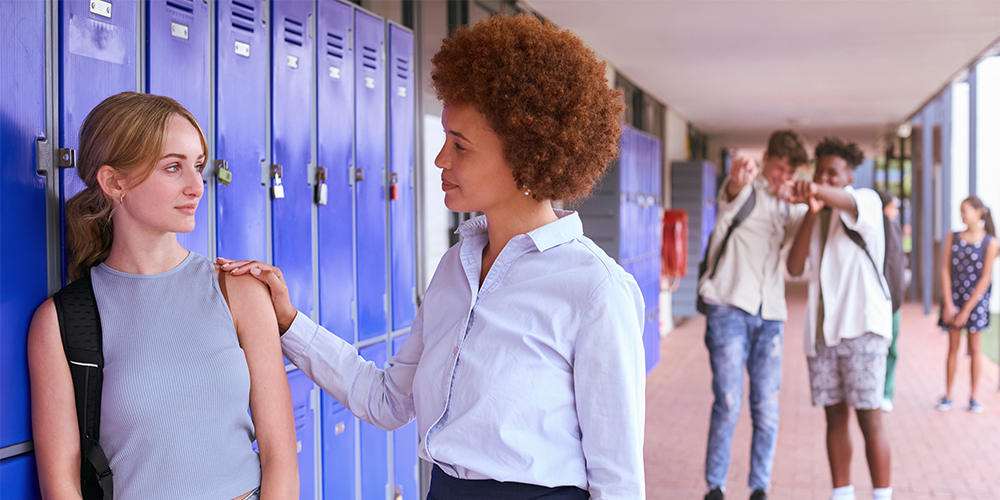Creating a safe and inclusive culture within the classroom is a foundational step in fostering positive social interactions among students and preventing bullying. Bullying is a serious concern that can have lasting effects on both the individuals involved and the overall learning atmosphere, it demands attention and intervention. By instilling a sense of security and respect within the classroom culture, educators play a pivotal role in mitigating the risk of bullying and promoting the well-being of their students.
Below we’ve listed four SEL-based strategies for shaping the culture of your classroom, setting the tone for respectful communication and empathy. You can also download these tips as a PDF to keep on hand or share with colleagues.
1. Create Safety
- Share and discuss clear definitions of bullying early in the year, including relational aggression and cyberbullying.
- Post and share schoolwide and classroom policies on behavior expectations and consequences.
- Teach students where and how to report bullying and use surveys to determine if students feel safe at school.
- Teach students how to be “Upstanders” by intervening in bullying and supporting targeted students.
- As the teacher, intervene consistently if and when problems arise.
2. Encourage Pro-Social Behavior
- Read books and share personal experiences that encourage empathy and kindness.
- Reward and affirm positive social behaviors in a variety of ways
- Roleplay productive problem-solving strategies, especially as they relate to conflict or misunderstandings.
- Encourage cooperative learning vs competition.
- Model positive coping strategies to handle anger and stress; consider teaching mindfulness techniques.
3. Provide Clear Interventions
- Post and share bullying intervention strategies for students in the classroom.
- Stop bullying behaviors as soon as they are observed.
- Follow up with both the target and the bully and make counseling available for both.
- Report all situations to administrators and counselors.
- Share intervention protocol with parents and students before issues arise.
4. Foster Positive Community
- Provide volunteer opportunities for students to encourage connections and help see students beyond themselves.
- Teach positive group work skills through direct instruction; don’t leave success to chance!
- Encourage relationships with teachers and peers through discussion and creative activities.
- Model and discuss conflict-resolution strategies.
- Teach assertive, not aggressive, communication.
When students perceive their learning environment as a safe space where their voices are heard and their differences are embraced, the likelihood of bullying incidents diminishes. These strategies are a great way to get started, but if you want to further your understanding of the complicated nature of bullying and discover more ways you and your students can help, check out Teaching Channel course 5131: SEL and Empathy-Based Bullying Prevention. This course uses video clips and resources from the iMPACTFUL film, The Upstanders, to demonstrate tools that empower bystanders to stand up to bullies, and it encourages victims that there is safety in remaining who they are by celebrating their identity.
Resources
Simmons, R. (2011). Odd Girl Out: The hidden culture of aggression in girls. New York, NY: Mariner Books.







